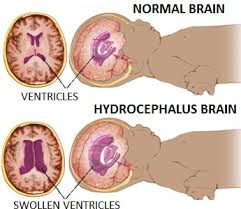Nursing Care Plan for Gastroenteritis
Gastroenteritis
Gastroenteritis is a condition that causes irritation and inflammation of the stomach and intestines (the gastrointestinal tract). Diarrhea, crampy abdominal pain, nausea, and vomiting are the most common symptoms.
Viral infection is the most common cause of gastroenteritis but bacteria, parasites, and food-borne illness (such as shellfish) can be the offending agent.
Many people who experience the vomiting and diarrhea that develop from these types of infections or irritations think they have "food poisoning," and they may indeed have a food-borne illness. Many people also refer to gastroenteritis as "stomach flu," although influenza has nothing to do with the condition.
Travelers to foreign countries may experience "traveler's diarrhea" from contaminated food and unclean water.
Symptoms
By definition, gastroenteritis affects both the stomach and the intestines, resulting in both vomiting and diarrhea.
Common symptoms may include:
Nursing Diagnosis
Fluid volume deficit and electrolyte less than body requirements related to excessive fluid output.
Imbalanced Nutrition, Less Than Body Requirements related to nausea and vomiting.
Intervention
Diagnosis 1
Imbalanced Nutrition, Less Than Body Requirements related to nausea and vomiting.
Purpose :
Nutritional needs disturbances resolved
Outcomes :
Clients increased nutritional intake, low dietary portion 1 provided, nausea, vomiting does not exist.
Intervention:
Diagnosis 2
Fluid volume deficit and electrolyte less than body requirements related to excessive fluid output.
Purpose :
Fluid and electrolyte Devisit resolved
Outcomes:Signs of dehydration are not there, mouth and lip mucosa moist, well-balanced fluid exchange
Intervention
Gastroenteritis is a condition that causes irritation and inflammation of the stomach and intestines (the gastrointestinal tract). Diarrhea, crampy abdominal pain, nausea, and vomiting are the most common symptoms.
Viral infection is the most common cause of gastroenteritis but bacteria, parasites, and food-borne illness (such as shellfish) can be the offending agent.
Many people who experience the vomiting and diarrhea that develop from these types of infections or irritations think they have "food poisoning," and they may indeed have a food-borne illness. Many people also refer to gastroenteritis as "stomach flu," although influenza has nothing to do with the condition.
Travelers to foreign countries may experience "traveler's diarrhea" from contaminated food and unclean water.
- The severity of infectious gastroenteritis depends on the immune system's ability to resist the infection. Electrolytes (these include essential elements of sodium and potassium) may be lost as you vomit and experience diarrhea.
- Most people recover easily from a short bout with vomiting and diarrhea by drinking fluids and easing back into a normal diet. But for others, such as infants and the elderly, loss of bodily fluid with gastroenteritis can cause dehydration, which is a life-threatening illness unless the condition is treated and fluids restored.
Symptoms
By definition, gastroenteritis affects both the stomach and the intestines, resulting in both vomiting and diarrhea.
Common symptoms may include:
- Low grade fever to 100°F (37.7°C)
- Nausea with or without vomiting
- Mild-to-moderate diarrhea:
- Crampy painful abdominal bloating
- Blood in vomit or stool
- Vomiting more than 48 hours
- Fever higher than 101°F (40°C)
- Swollen abdomen or abdominal pain
- Dehydration - weakness, lightheadedness, decreased urination, dry skin, dry mouth and lack of sweat and tears are characteristic findings.
Nursing Diagnosis
Fluid volume deficit and electrolyte less than body requirements related to excessive fluid output.
Imbalanced Nutrition, Less Than Body Requirements related to nausea and vomiting.
Intervention
Diagnosis 1
Imbalanced Nutrition, Less Than Body Requirements related to nausea and vomiting.
Purpose :
Nutritional needs disturbances resolved
Outcomes :
Clients increased nutritional intake, low dietary portion 1 provided, nausea, vomiting does not exist.
Intervention:
- Examine patterns of clients and nutritional changes. Measure client weight. Examine factors cause the fulfillment of nutritional disorders. Perform physical examination of the abdomen (palpation, percussion, and auscultation). Give your diet in warm conditions and the small but frequent portions. Collaboration with the team in determining diet nutrition clients.
Diagnosis 2
Fluid volume deficit and electrolyte less than body requirements related to excessive fluid output.
Purpose :
Fluid and electrolyte Devisit resolved
Outcomes:Signs of dehydration are not there, mouth and lip mucosa moist, well-balanced fluid exchange
Intervention
- Observation of vital signs. Observation of signs of dehydration. Measure the liquid infut and output (balanc ccairan). Provide and encourage families to provide a lot of drinking more or less 2000 - 2500 cc per day. Collaboration with physicians in providing therafi fluid, electrolyte lab tests. Collaboration with a team of nutrition in low-sodium fluids.

Komentar
Posting Komentar